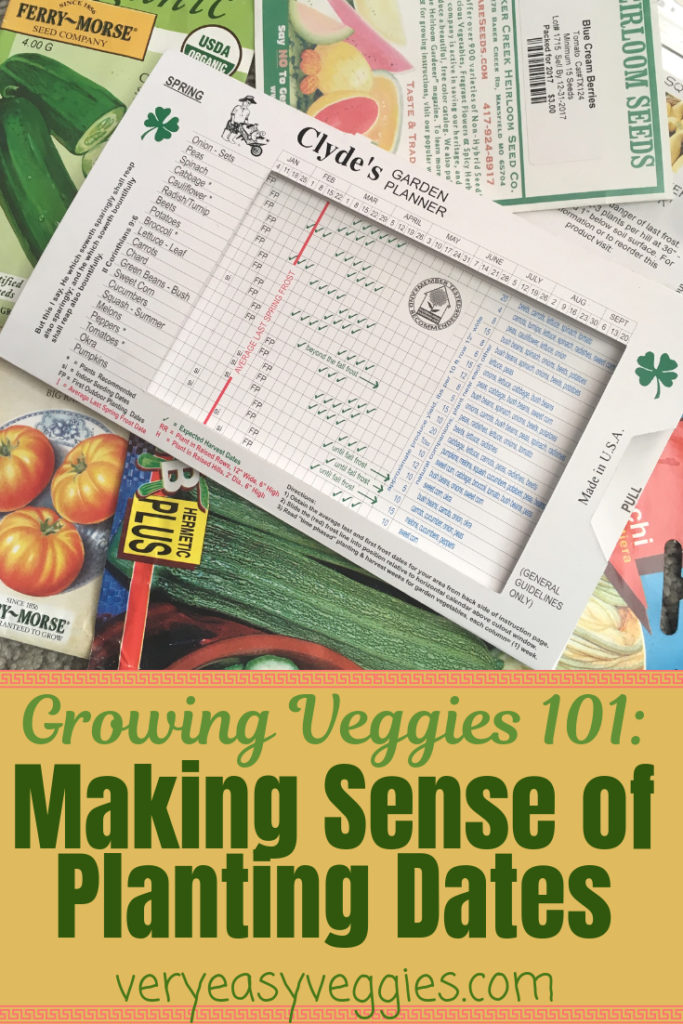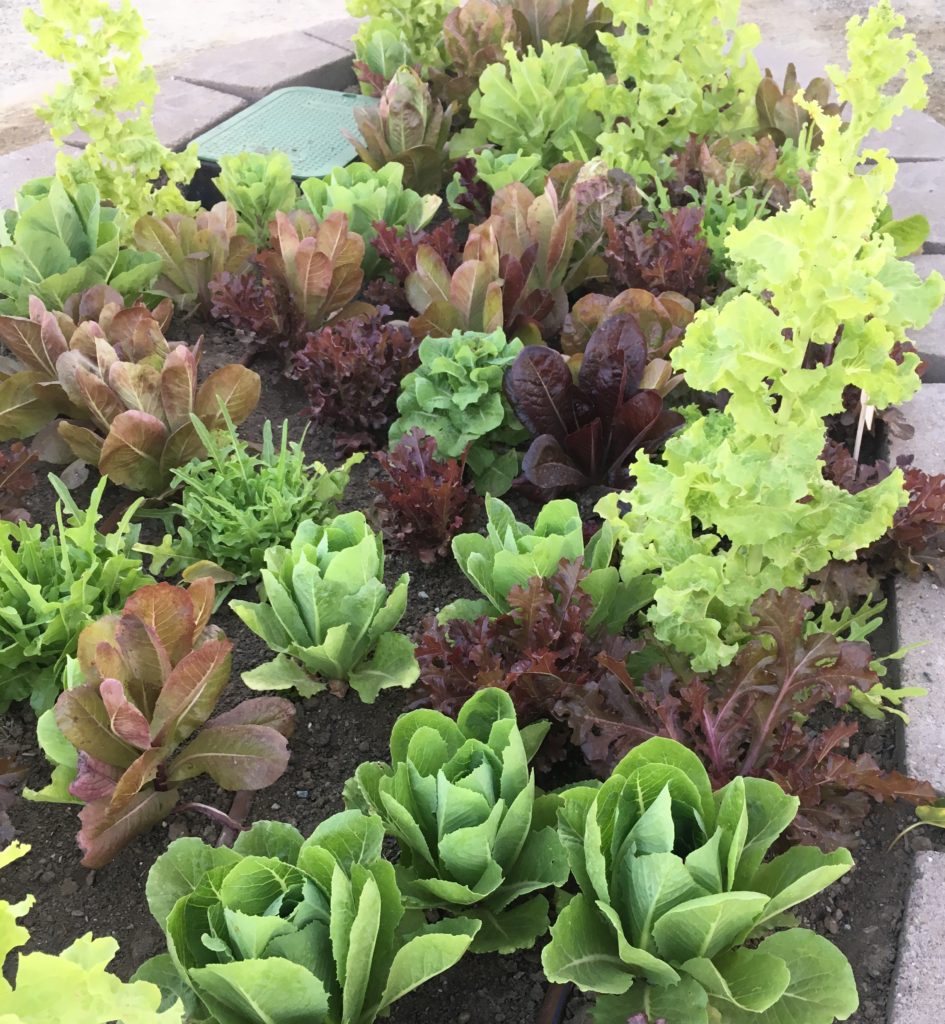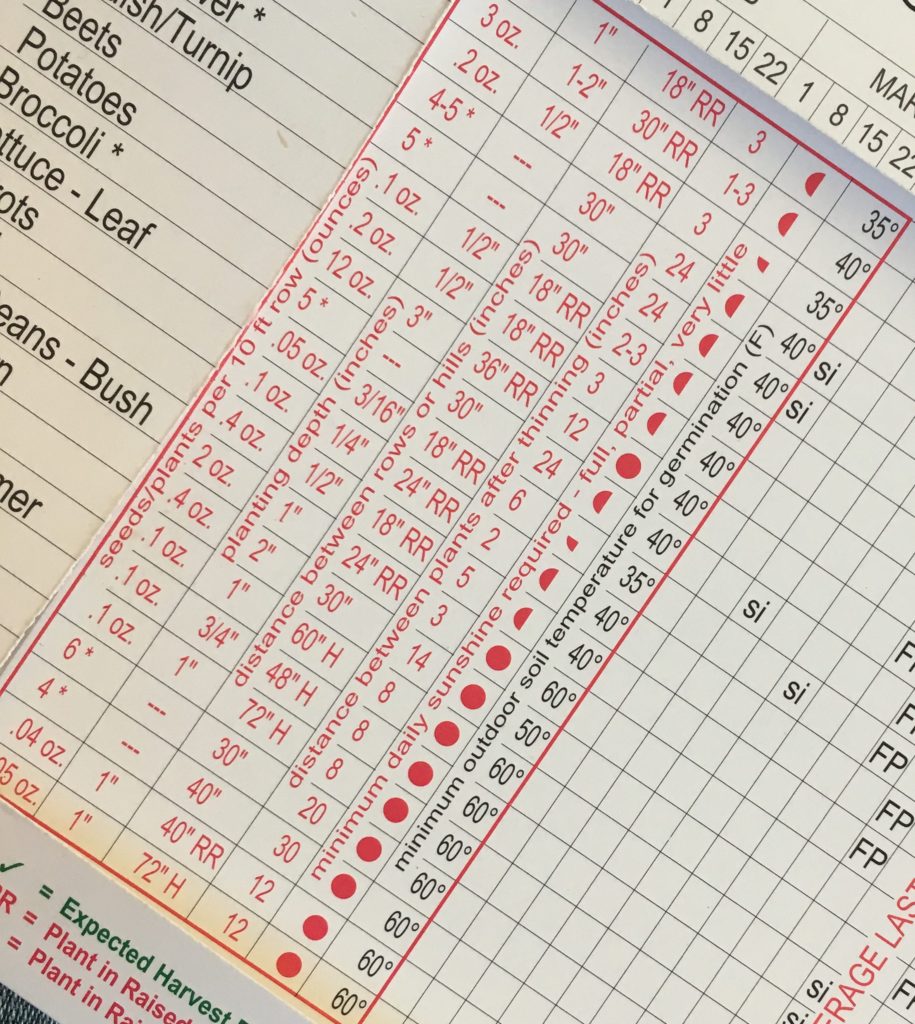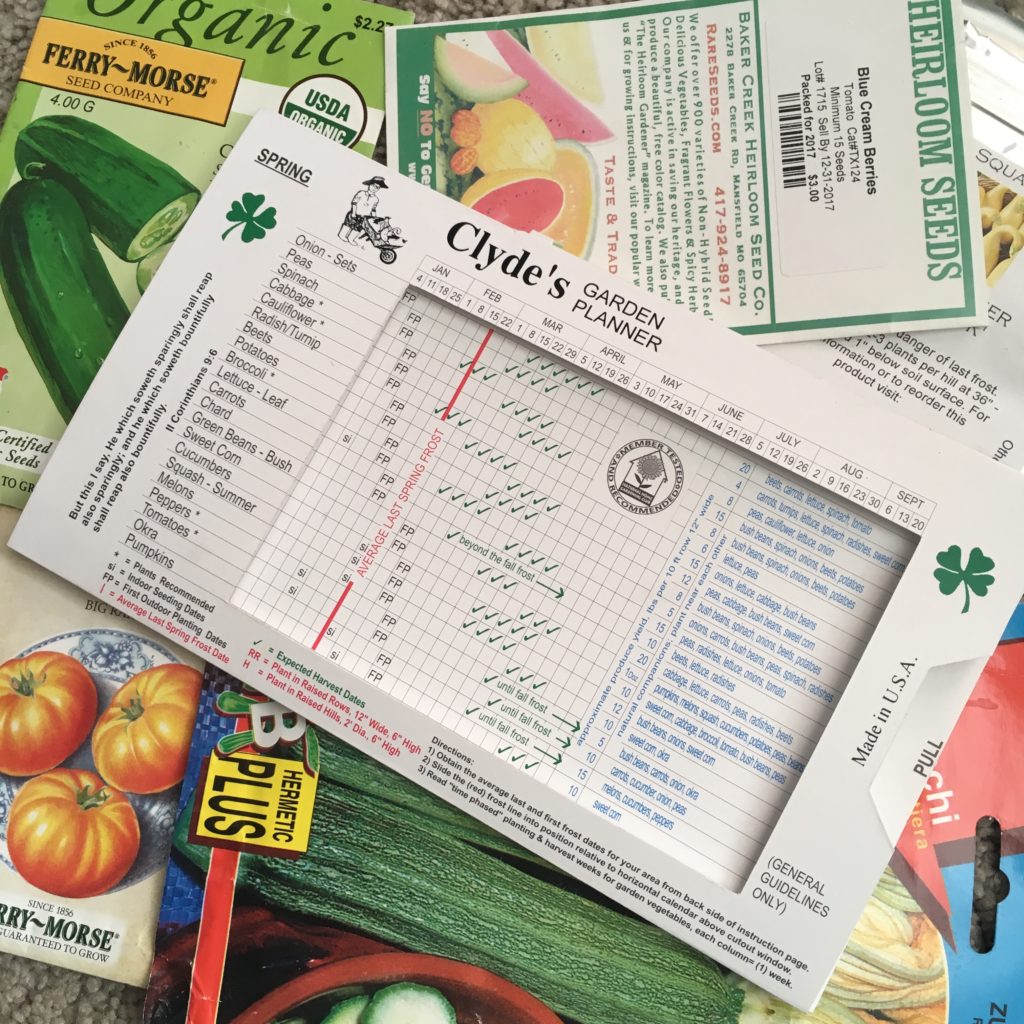Do all the lists of planting dates you see just leave you more confused about when to start a vegetable garden?
Maybe I’ve got a unique perspective writing this post… I don’t know about you, but when I see lists on Pinterest of suggested planting dates–exact, actual dates–I shake my head… because where I come from, it’s not that simple!
I live in a lovely mountain town that you may have heard of if you’re a trucker or traveler, a train enthusiast, or, well, if you’re familiar with our state prison. It’s situated in the mountains between the desert of southern California and the agricultural central valley of California. To put it simply, we’re quite an unpredictable mix of weather and micro-climates! So I rarely trust arbitrary dates from the internet.
As an example, I live 15 minutes away from my mom. She lives a few houses away down the hill from my cousin. This year, my mom’s garden got its fall killing freeze in October (maybe earlier). My garden froze in mid November, a few weeks after my neighbor’s. My cousin’s garden (walking distance from my Mom’s) didn’t freeze until December! Spring frosts are even more unpredictable, since we’ve been known to get snow in late May even after a warmer April.
All that to say, I know planting dates can get confusing, but I’m confident we can figure it out together! At the end I’ll also share a handy little cheat sheet tool you can use to help!This post contains a few affiliate links.

P.S: Make it easier on yourself and grab all these tips and more–from seed to harvest–in my eBook for beginner gardeners below!
get the Very Easy Veggie Garden eBookWarm Season or Cool Season?
The first step to knowing when to start your garden is to figure out whether you’re planting warm season or cool season. Most people think of the more popular warm season when they think of starting a garden, so not everyone realizes there’s a difference!
Vegetable plants actually fall into two general planting seasons: cool weather or hot weather. Warm season (summer) vegetables are planted in spring and include tomatoes, squash, peppers, beans, cucumbers, corn, and melons. Cool season veggies can be planted in either early fall/late summer, or early spring/winter. Cool season crops include peas, lettuce, beets, radishes and other leafy crops & root crops.
It’s not always easy to remember which one is which, but checking the plant’s instruction label helps.

Warm season vegetables like tomatoes, peppers, cucumbers, and squash need consistently warmer temperatures and more sun in order to produce flowers and fruit. A frost or freeze will usually kill them. For some, like tomatoes, cold nights make their fruit have a starchy or mushy texture and less flavor (hint—this is why you shouldn’t refrigerate whole tomatoes)! If you want to plant these sensitive plants earlier, get a frost cover like a wall o water to protect them (trust me, those are the best)!
Cool season vegetables need consistently cool temperatures because too much heat will scorch the plants (like peas), or cause them to “bolt.” Bolting is when a leafy crop like lettuce starts to grow tall like a stock instead of staying low to the ground like it should. Once they bolt, they often taste more bitter or don’t produce as well.

If your area has lots of heat or lots of cold, you still have options. Vegetables come in many “varieties” developed to suit different conditions. For instance, there are lettuce varieties that tolerate heat better without bolting, and tomato varieties that can still set fruit in somewhat cooler temperatures. Look for these notes on the label, or search for seeds online that have the qualities you need.
When is your frost date?
When researching when to start your garden, most planting dates you will find are based on either the last frost of Spring. (Fall plantings of cool season veggies are often based on the first freeze of winter). As noted above, frost can damage or kill warm season vegetables, so of course they need to be either planted after the frost or protected until the danger is past.
Cool season crops will tolerate some frosts and light snows but can be damaged by hard freezes. That’s why it’s best to plan to plant them with enough time to grow and produce before it gets too cold.
Note the average times that the seasons change in your area, or ask local gardeners what frost dates they go by.
The trouble with seeds is that you’re supposed to plant seeds indoors several weeks before these frost dates—making it a bit of a guessing game for some of us! It’s best to start them about 6-8 weeks (about two months) before you plan put them outside. Using a garden planner like the one at the bottom of this post can help predict when to start your garden seeds indoors.
When to start a vegetable garden based on soil temperature
If your area doesn’t have clear first & last frost dates (like mine) knowing when to start your garden can be a bit of a guessing game. But you can also judge warm and cool seasons by average soil temperature. It won’t always be the same as air temperature, so you can use a soil thermometer if you want to be sure. Most warm season vegetables need at least 60+ degree soil to grow.
If your area doesn’t really get frosts or freezing temperatures at all, you can usually plant your summer garden earlier than most of us, your winter garden later, and both garden seasons may last longer. However your veggie plants will still grow best if the temps are mostly within their desired range. Plan to plant when air temps are mostly above 70 degrees for warm season, or below 70 for cool season. Different seeds also need certain soil temperatures to sprout (again, most warm season crops need 60+ degree soil).

Sunlight & Day Length
Another aspect of the two planting seasons to consider is hours of sunlight. North of the equator, winter days are shorter with less sunlight and summer days are longer with lots more sun. You will find that leafy cool season vegetables can usually still grow okay with a little less sunlight. Many summer plants, on the other hand, will not produce fruit if they don’t get at least 6-8 hours of sun each day.
When to Start Seeds Indoors vs Transplanting
For many plants, “planting dates” really mean transplanting dates, so if you’re starting from seed you should plan accordingly. Start your seeds indoors a month or two before you want to transplant them to the garden. Give them a few partial days outside to “harden off” and get used to outdoor conditions before putting them in the garden.
Some plants, however, don’t prefer to be transplanted. In general root crops (carrots etc), leaf crops (herbs, spinach, etc), and legumes (beans & peas) do better if you sow the seeds directly in the garden.
Individual Vegetable Recommendations
Use the chart below to get an idea of when to plant each veggie, or scroll down for an even better, reusable version that you can keep on hand for any time you need it! Clyde’s planning chart is customizable for your area to help you know when to start a vegetable garden.
Cool Season
- Peas & Spinach: plant seeds outdoors up to 8 weeks before your last spring frost.
- Cabbage & cauliflower: put plants out about 5 weeks before last spring frost.
- Radish/turnip/beets: seeds outdoors 4-5 weeks before last spring frost.
- Broccoli & Lettuce: put plants out about 3 weeks before last spring frost.
- Carrots & Chard: sow seeds outside about 2 weeks before last spring frost.
The above can also be planted 2-3 months before the first fall frost if protected from heat.
Warm Season
- Corn & Green Beans: Seeds outdoors 1-2 weeks after last spring frost.
- Cucumbers, Squash, & melons: Put plants or seeds out 2-3 weeks after last spring frost.
- Tomatoes & peppers: Put plants out 3-4 weeks after last spring frost
If you have a short summer season like I do or want to get the most time out of your garden, plant closer to just after frost date…. Then, just keep an eye on the weather and protect your plants as needed! I often use regular 5 gallon buckets to protect my plants from light frosts overnight, but I am also curious about plastic garden cloches. Wall-o-water is a great product to protect your plants and extend your season; my mom has used them for years with great success.
Watching the weather forecast and actual temperatures at your home can help you know when to start your garden. Personally, I like to have a digital home thermometer that can let me know the exact temperatures in my own yard (they don’t always match the weather channel says!). These type are great to help you know when it’s safe to plant your vegetable garden because they also record the minimum and maximum temperatures for you.


Clyde’s Garden Planner
If all this info seems a bit much to remember, I don’t blame you (I agree!) A chart like Clyde’s Garden Planner is the perfect cheat sheet to remember ALL of this information and more! This slide chard helps you visualize by letting you “set” your usual approximate frost dates for your area. From there you can see suggested times for when to start your garden outdoors or when to start seeds indoors.
Clyde’s chart also provides sunlight requirements and minimum soil temperatures for each plant, spacing & seed depth, suggested companion plants, and more. Suffice to say, it will save you a lot of googling and guessing! As a visual learner, I love this chart already! You can also purchase it here or here (these are NOT affiliate links).
